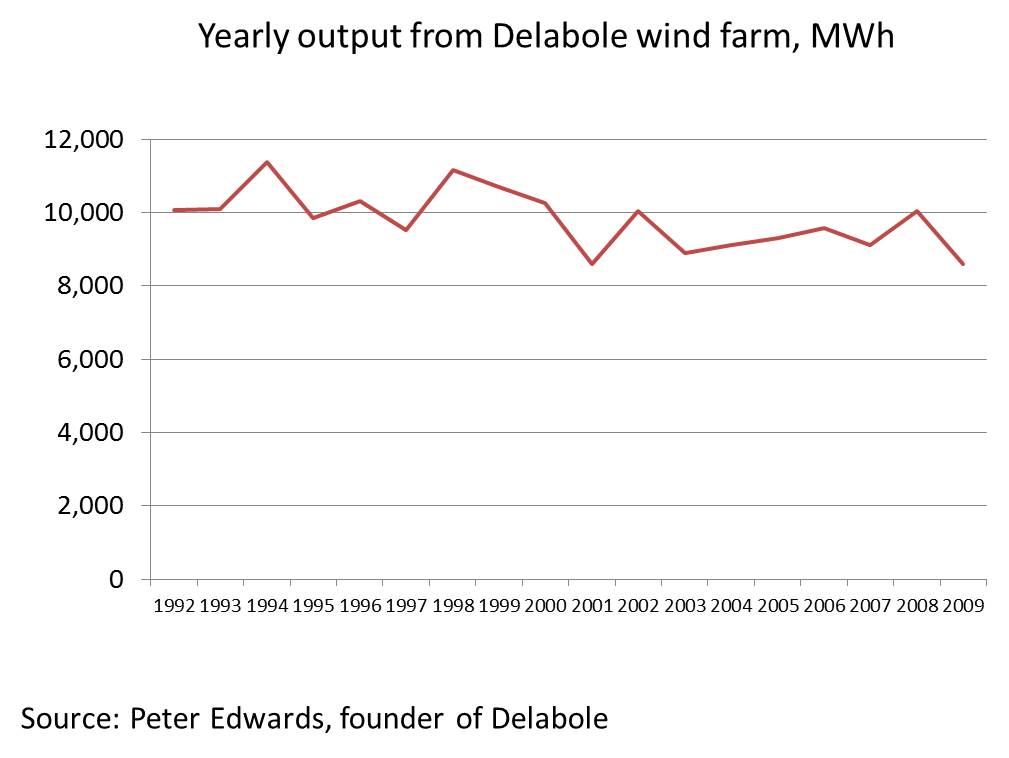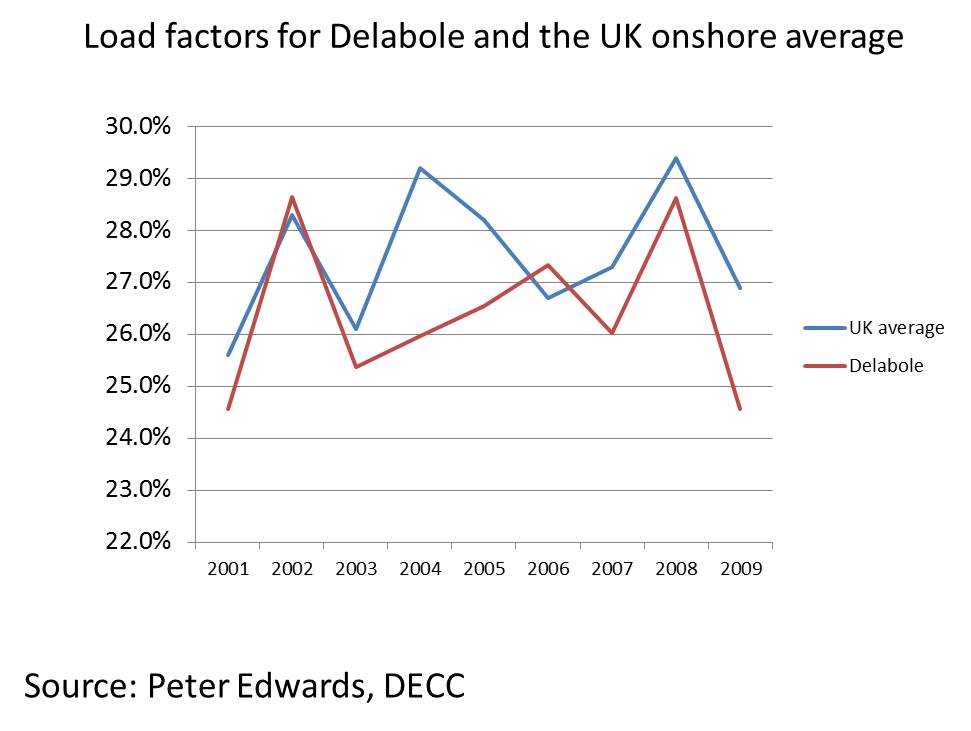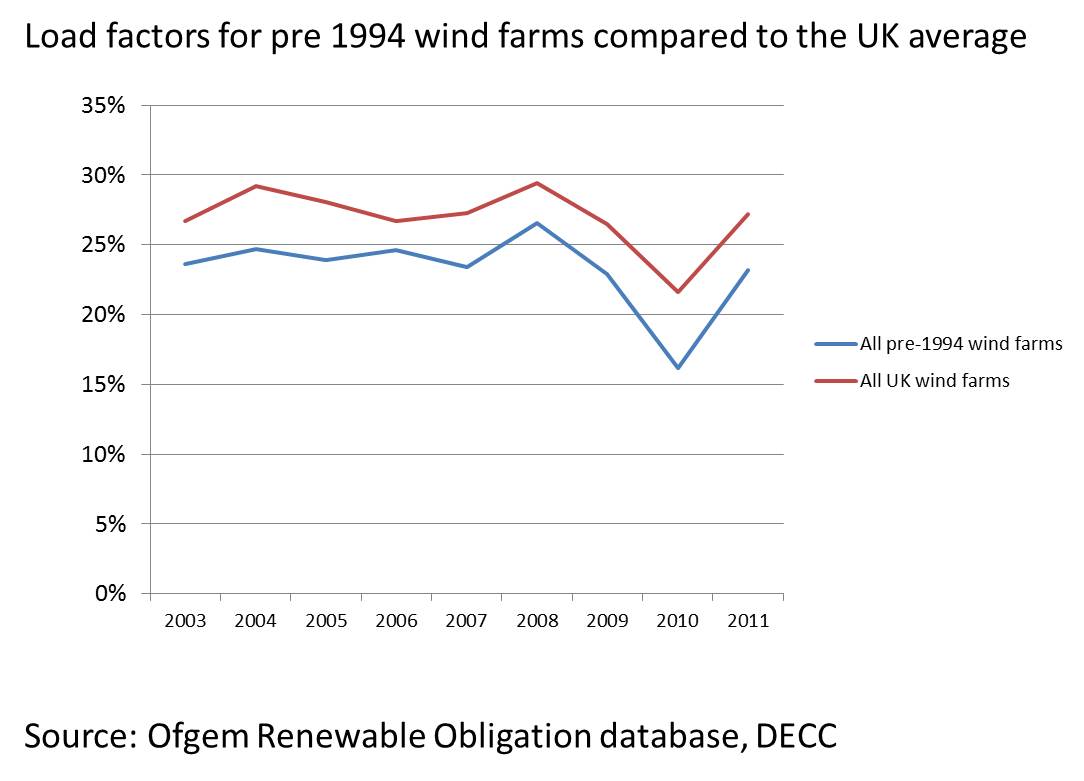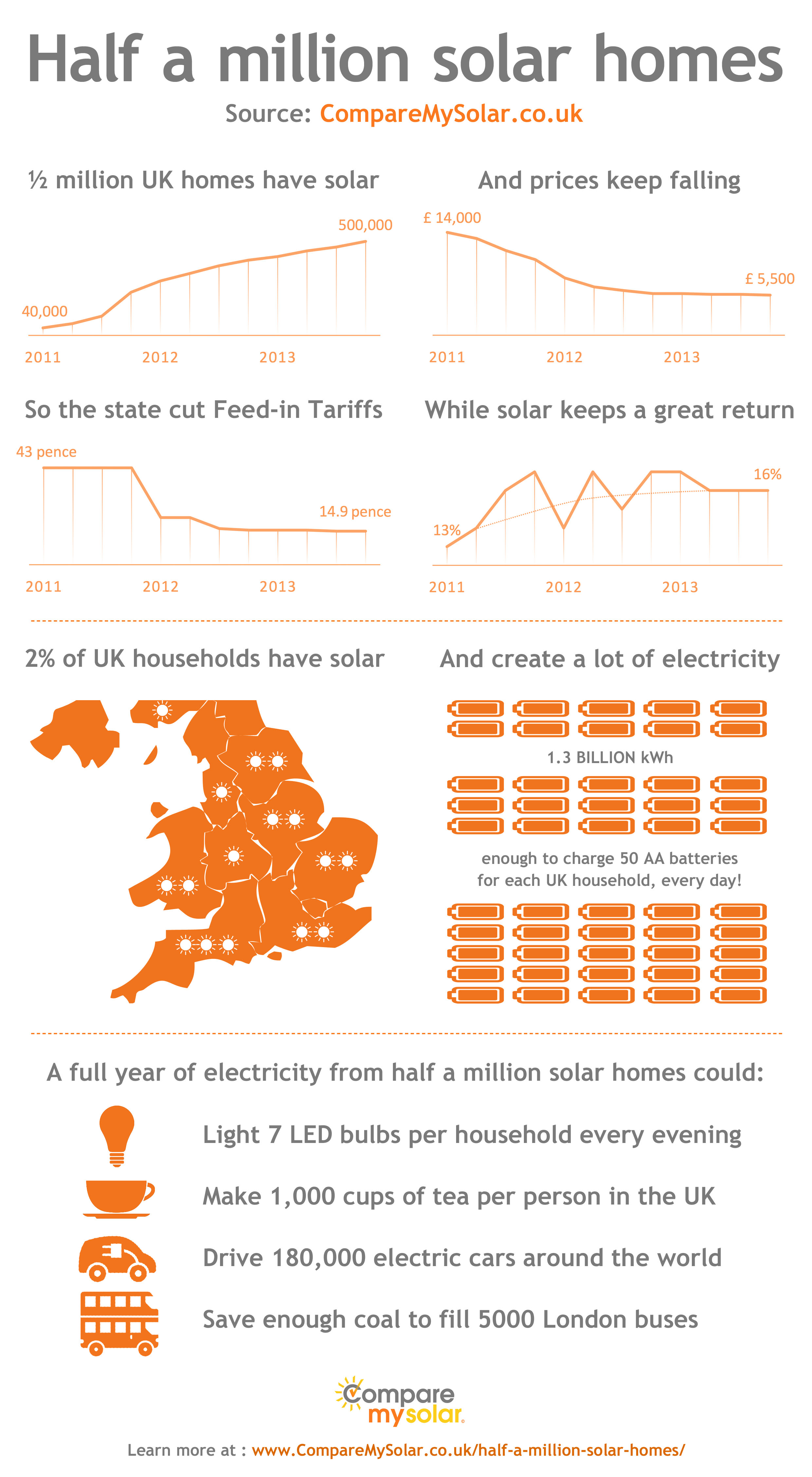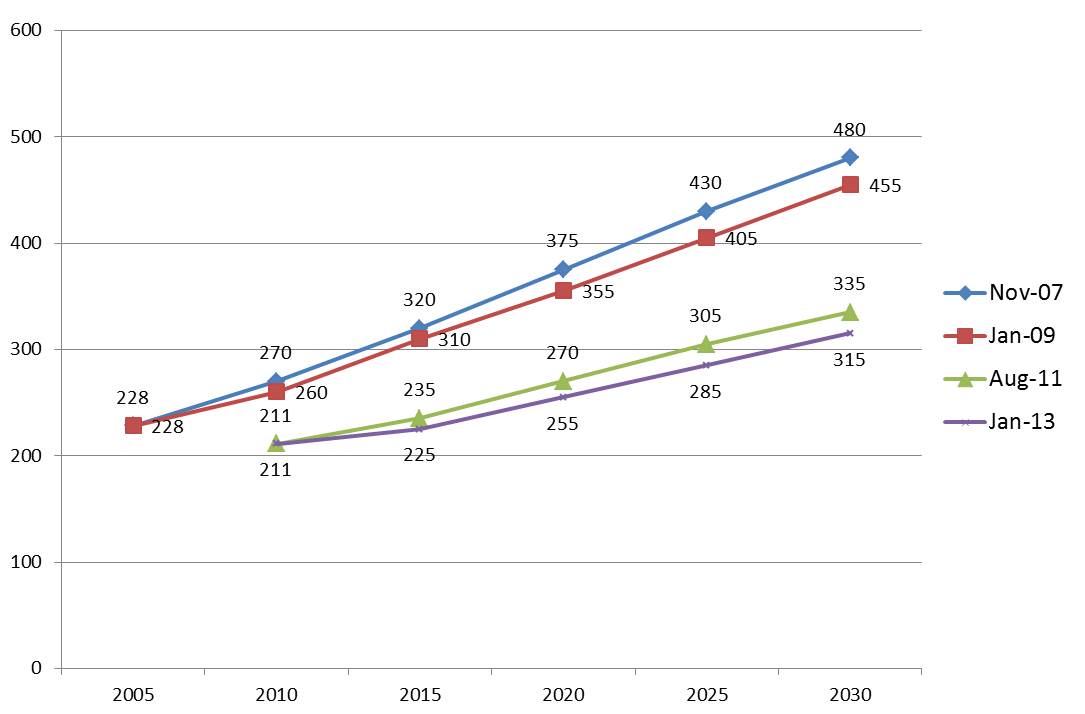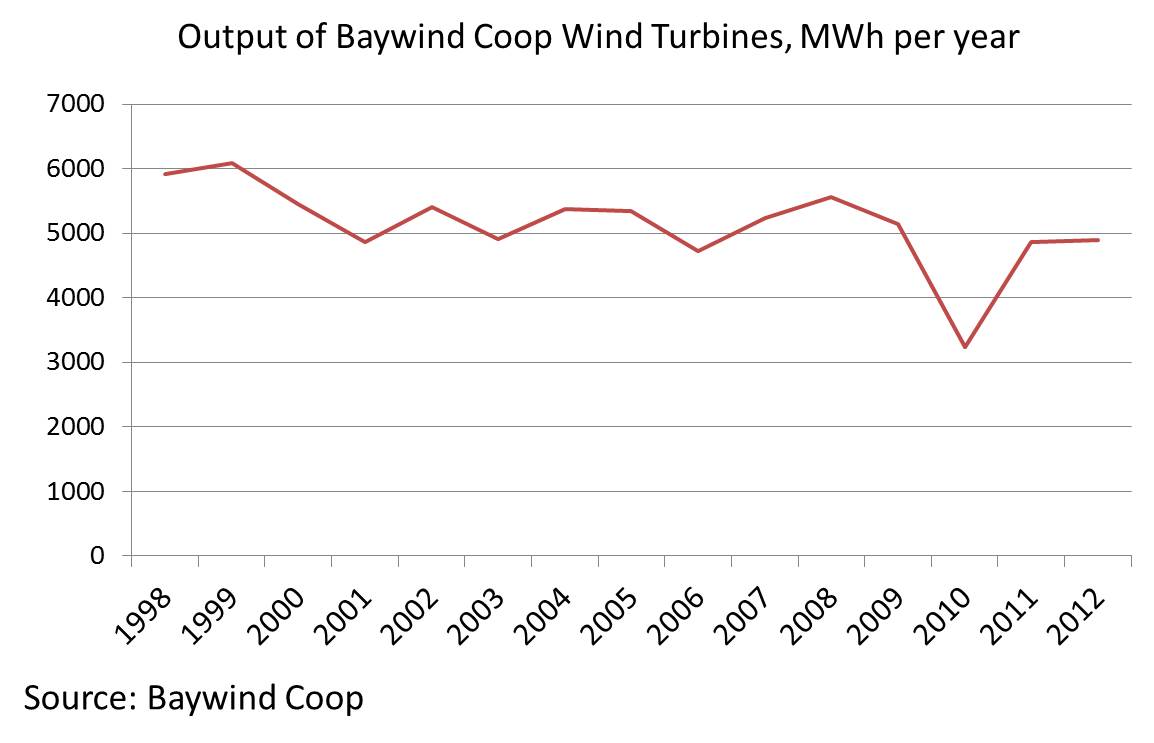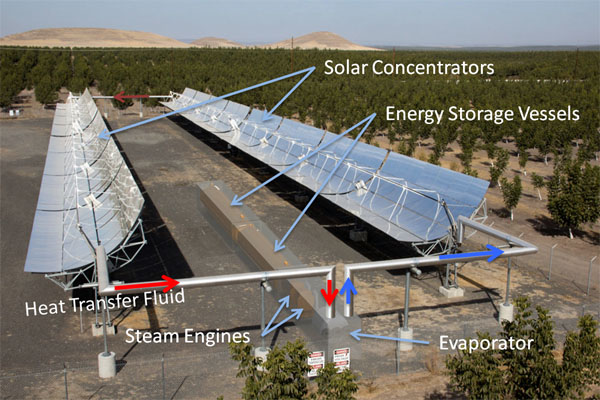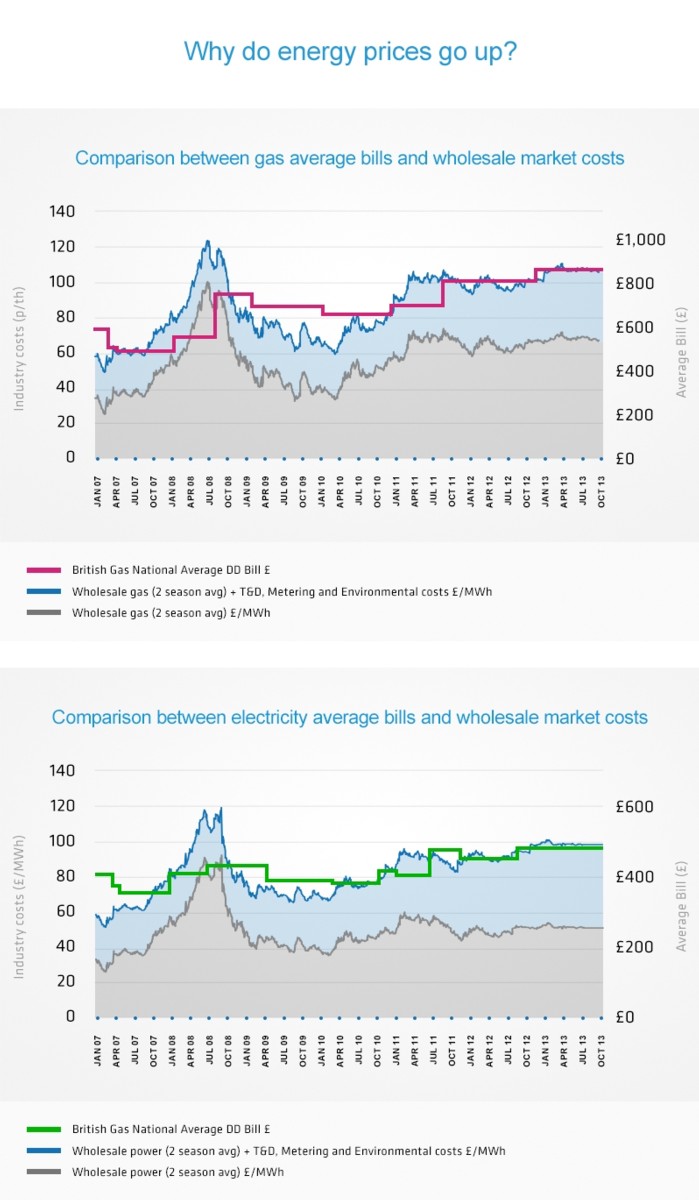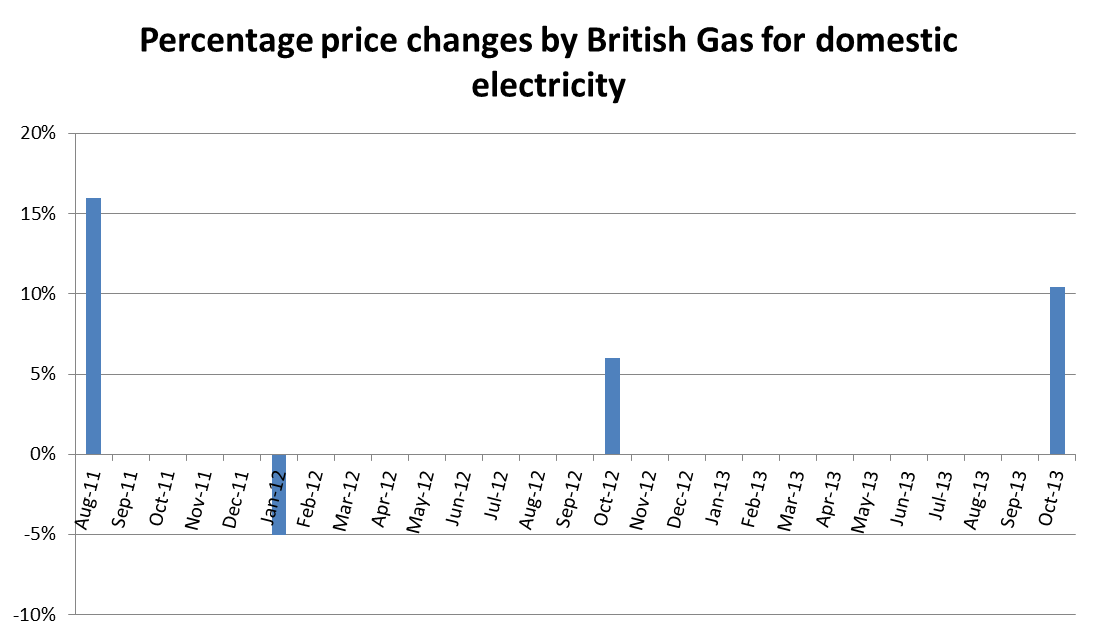Response from Professor Gordon Hughes to previous posting
(Professor Hughes has very kindly provided a response to a recent posting on this site. (Electricity output figures show wind turbine performance deteriorates very slowly with age). The original article was also carried on other web sites and Professor Hughes refers to the title and date of publication on the Ecologist blog. My reply to Professor Hughes is carried as a comment below his text.)
Wind Turbine Performance Over Time: A Response to Chris Goodall
In his blog published on 03.01.14, “Wind turbines – Going strong 20 years on”,[1] Chris Goodall argues that the degradation in the performance of wind turbines with age is much lower than reported in my 2012 study The Performance of Wind Turbines in the United Kingdom and Denmark.[2] The following note explains why I believe that my conclusions are sound.
Mr Goodall has kindly provided me with the data to which he refers to in his work. With the exception of a long series for Delabole wind farm, Mr Goodall’s data is a small subset of the much larger sample of wind farms, several hundred in fact, analysed in my original study. Mr Goodall’s data also adds a few monthly observations that were missing when my data was originally extracted from the source database. Overall, Mr Goodall’s data amount to about 5% of the data that I analysed, and where he has new material it adds very little.
Furthermore, Mr Goodall himself very frankly admits that he does not have the statistical skills required to replicate the methods of my analysis. His work does not constitute a reanalysis or a rebuttal of my paper. In fact, his calculations simply reproduce one feature of the results reported in my paper. There was a generation of wind farms developed in the early 1990s, both in Denmark and the UK, using turbines of less than 0.5 MW which have experienced a relatively limited decline in performance with age. By focusing exclusively on these wind farms, Mr Goodall misses the bigger picture. The performance of wind farms developed from the mid-1990s onward is much worse. The average size of the turbines and the wind farms increased. The larger turbines appear to have been less reliable, while my analysis suggests that the siting and maintenance of wind farms may have deteriorated.
Mr Goodall concludes with two challenges/questions which are representative of many comments on my work. They spring from a lack of understanding of the statistical reasoning involved. I will begin with his second question, since it is central to the analysis. Mr Goodall wonders how it is possible to estimate the decline of load factors over time when we have less than twenty years of data for any wind farm. This is where the mathematical/statistical specification described in the Appendix to my paper is crucial.
The load factor for any wind farm in any period is expressed as the sum (or product in the multiplicative version) of components associated with the age of the wind farm (held constant over all wind farms of the same age), the period (constant over all wind farms in one period), the site of the wind farm (constant over time and age), and a random error. This is a standard formulation used by statisticians, including for the analysis of data from a wide range of medical and biological trials. The age effects can be identified from the variation in output across wind farms of different ages for each month. So long as each wind farm is tracked for a number of periods, the site characteristics of the wind farm can be separated from age effects which are common to all wind farms of the same age.
In his first question, Mr Goodall challenges me to produce a counter-example to the case of Delabole, which he claims demonstrates a much lower rate of degradation with age than that reported in my paper (in fact it is similar to the overall rate I report for Denmark). This is a recurrent theme among critics of my work. As an argument it is equivalent to someone claiming that smoking cannot harm anyone’s health because their “Uncle Jack” has smoked a pack a day for 60 years and is still fit and well at an age of 80. Of course there are apparent counter examples, and these can be found in the REF load factor database: www.ref.org.uk. It would be invidious to name them, and in any case they no more prove my analysis than Delabole disproves it. Individual cases prove nothing about population epidemiology, a point which is as true for wind power as for public health. The proof is in the statistical analysis itself.
As a separate point, I am struck by how selectively critics report the results of my work. As noted above, the experience of Delabole and other wind farms built in the period 1991-93 is consistent with my analysis of wind farms in Denmark, where load factors seem to decline more gently with age. That may reflect the robustness of wind turbines built in the early 1990s, site choice, how they have been maintained, and other factors. For the avoidance of doubt, I do not argue that the performance of wind farms must, inevitably, degrade rapidly with time. My observation is that the average performance of wind farms in the UK has, as a matter of fact, fallen as they have aged, a fact that is probably the result of both the physical characteristics of wind power and the economic characteristics of the financial incentive regime, the Renewables Obligation subsidy.
My results have important and obvious implications for both investors and policymakers. But the response of advocates of wind power is rather interesting. For the most part, it has involved an attempt to shoot the messenger rather than trying to understand the underlying phenomena. Yet, none of the statistical analyses of my or other data have demonstrated that there is no degradation in performance in age. The issue is not whether degradation occurs, but how much. There can be reasonable disagreement about that, as the comparison between Denmark and the UK illustrates (which is why I included that in my original study). The key point is to identify the causes of changes in load factors over time revealed by statistical analysis, and whether and how these may be addressed.
The willingness of the owner/operator of Delabole to provide unpublished data on output from the wind farm is to be commended, but, though welcome, it is only a small step in the right direction. Any investigation in this area is hampered by the unwillingness of operators to provide the wind speed data collected by the anemometers which are installed at all wind farms. Let me briefly indicate why this matters. One explanation for performance degradation over time would be an increasing frequency (or length) of mechanical failures of turbines. An alternative explanation is that the power curve (the relationship between wind speed and power output) changes due to gradual erosion of the blades, a phenomenon well known in the industry. An assessment of the relative contribution of these – and other – factors can be used to improve both turbine designs and maintenance regimes for existing wind farms, but such work cannot happen until the anemometry data from individual wind farms is made publicly available.
An ostrich-like approach of denying that there is a problem helps no-one. A lack of transparency leads to the suspicion that wind operators are unwilling to be accountable for the large sums of public money which they are currently receiving, and certainly makes it difficult to ensure that subsidy policies give good value for money to the consumers who foot the bill. But even the wind industry does not benefit in the long run, because it is foregoing the opportunity to learn from and build on the lessons from detailed analysis of performance.
Gordon Hughes
05.01.14
About the Author
Dr Gordon Hughes is a Professor of Economics at the University of Edinburgh, where he teaches courses in the Economics of Natural Resources and Public Economics. He was senior adviser on energy and environmental policy at the World Bank until 2001.
